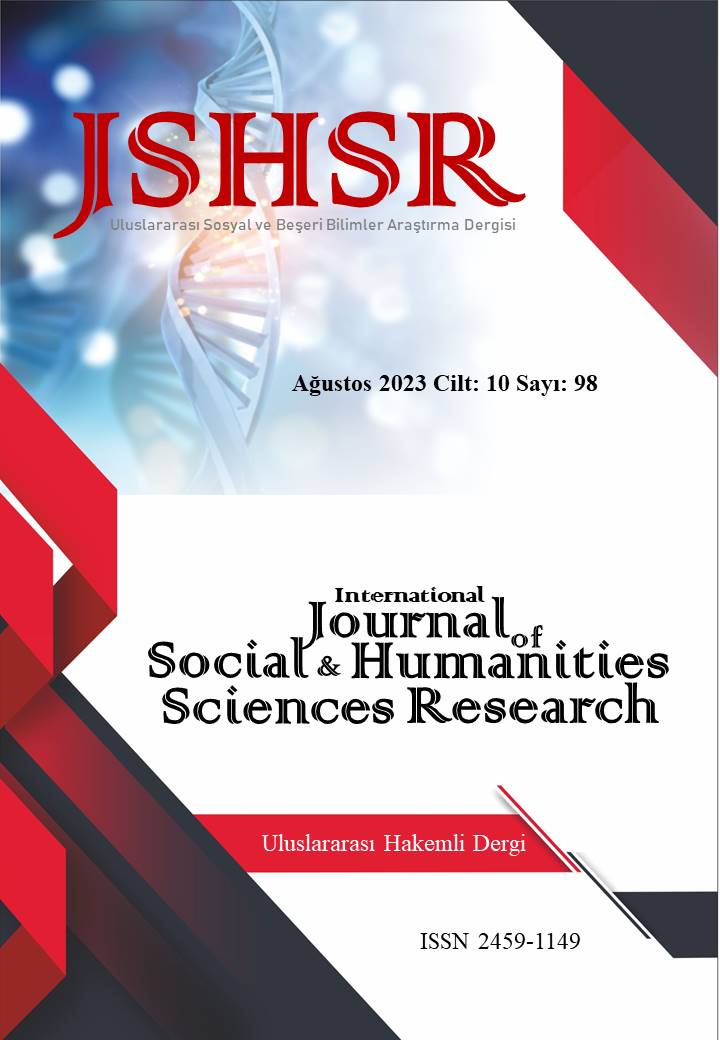The Climate Compatible of Traditional Houses of Tabriz City Analysis of Design Criteria
DOI:
https://doi.org/10.5281/zenodo.8306852Keywords:
Traditional housing, climate, Tabriz, architectural designAbstract
Traditional houses are the leading examples of buildings designed in harmony with the climatic conditions and topography of the place they are located. The sample area of this study, which was carried out in order to re-read and understand traditional houses through climate and to transfer the teachings to be obtained from traditional houses to future generations, is the city of Tabriz, which has a traditional house pattern.
Traditional residences in the city of Tabriz, which is located in the province of East Azerbaijan in the northwest of Iran and has a cold climate, have a characteristic appearance due to their climate-compatible designs. In the study, registered house samples with different plan types were analyzed based on their compatibility with the regional climate.
As a result of the study, it has been seen that the traditional houses of Tabriz have features suitable for cold climate conditions in terms of orientation, settlement, material selection, space organization, building form, building envelope and green texture.
References
Ahmadpour, S.F. (2015). Ekolojik tasarım ilkeleri bağlamında Tebriz geleneksel konutlarının incelenmesi. [Yayımlanmamış yüksek lisans tezi]. Karadeniz Teknik Üniversitesi.
Bani Masud, A. (2013). Iranian contemporary architecture (2nd ed.). Independently Published.
Boduroğlu, Ş., Kariptaş, F.S., & Sarıman, E. (2009, October 22-25). Evaluation of the traditional Turkish house from the sustainable from the point of view of the ecological design [Conference presentation]. International Ecological Planning and Architecture Symposium, Antalya.
Çavuş, M., Dayı, M., Ulusu, H., & Aruntaş, H.Y. (2015, May 28-30). Sürdürülebilir bir yapı malzemesi olarak kerpiç [Conference presentation]. ISBS 2nd. International Sustainable Buildings Symposium, Ankara.
Ebrahimi, A., Pour Rahimian., F. B.& Sahraei Loron, M. C. (2013). Impacts of climate on genesis of vernacular architecture of different parts of Iran: case study of cold and dry Azerbaijan-Iran. Alam Cipta - International Journal of Sustainable Tropical Design Research and Practice, 6(1), 69-82.
Esmaeili Sangari, H. & Omrani, B. (2014). History and architecture of old Tabriz houses. Foruzesh Publication.
Ghobadian, V. (2013a). Climatic analysis of the traditional iranian buildings. Tehran University Publication.
Ghobadian, V. (2013b). Styles & consepts in Iranian contemporary architecture. Elme Memar Press.
Karamnezhad, P. & Meimanatnezhad, K. (2011). Tabriz Iranian glory, (çev. H. Mehrabi). Tabriz Municipality.
Kasmai, M. (2005a). Climate & Architecture. Khak Publication.
Kasmai, M. (2005b). Doğu Azerbaycan eyaletinin iklimsel imar ve tasarım rehberi-soğuk iklim. Konut ve Yapı Araştırma Merkezi.
Keynejad, M. A.& Shirazi, M. A. (2011). The Traditional Houses of Tabriz (Vol. 1). Institute for Authorship, Translation and Publication of Artistic Work - Iranian Academy Arts.
Khoshniat, M. A. (2015). House of Tabriz, the tornado destroyed. Javan.
Memarian, G. H. (2012). İran konut mimarisi tanıtımı, dışadönük konut tipolojisi. Soroush-e Danesh.
Memarian, G. H. (2013). İran mimarisi. Soroush-e Danesh.
Mirahmadi, F. & Altan, H. (2018). A solution for future designs using techniques from vernacular architecture in southern Iran. Sustainable Buildings, 3(1), 1-20. https://doi.org/ 10.1051/sbuild/2017007.
Nasrollahi, F. (2009). Climate and energy responsive housing in continental climates: The suitability of passive houses for Iran's dry and cold climate. Universitatsbibliothek.
Pirniya, M. K. (2007). Stylistics of Iranian architecture. Soroush-e Danesh.
Roustaei, S. & Sarı Sarraf, B. (2006). Tebriz kentinin fiziksel gelişimini etkileyen çevresel tehlikeler imarı. Serzemin Coğrafi Dergisi.
Shaterian, R. (2011). Climate & Architecture. Sima-e Danesh.
Soleymanpour, R., Parsaee, N. & Banaei, M. (2015). Climate comfort comparison of vernacular and contemporary houses of Iran. Procedia - Social and Behavioral Sciences, 201, 49-61. https://doi.org/10.1016/j.sbspro.2015.08.118.
Soltanzadeh, H. (2010). Tabriz a solid cornerstone of Iranian architecture. Iran Culture Studies.
T.C. Başkanlık, Atatürk Kültür, Dil ve Tarih Yüksek Kurumu (2015, Şubat). http://www.tdk.gov.tr/
Watson, D. & Labs, K. (2005). Climatic design: Energy - efficient building priciples and practices, (çev. V. Ghobadian & M. Faze-Mahdavi). Tehran University.
URL1 Irimo-I.R.of Iran Meteorological Organization. http://www.irimo.ir/ (09.06.2023)
URL2 Iran location map.svg. http://commons.wikimedia.org/wiki/File:Iran_location_map.svg (08.06.2023).
URL3 Toprağın Mimariye Etkisi. http://memar-babol.blogfa.com/8809.aspx (08.06.2023).
Downloads
Published
How to Cite
Issue
Section
License
Copyright (c) 2023 INTERNATIONAL JOURNAL OF SOCIAL HUMANITIES SCIENCES RESEARCH

This work is licensed under a Creative Commons Attribution 4.0 International License.


